The Kurdish defenders of Kobane have held out more than a month against the heaviest assault the IS (Islamic State) terror group has launched against any target until now. Between 9,000 and 14,000 IS terrorists with about 40 tanks, rocket launchers, and heavy artillery are stationed around Kobane and IS constantly sends reinforcement into the area. It is estimated that IS has concentrated 60 percent of its forces around the town.
The stubbornly resistance of only lightly armed Kurdish fighters, 40 percent of them women, against a more than 10 times superior terrorist force equipped with heavy state of the art US made armor has not surprisingly caught global media attention. This is the stuff historical myths are made off, and the image of Kobane’s defenders has already reached mythical proportions.
It is a make or break event for both warring parties. If the city falls, the courageous experiment of decentralization and direct democracy, which the Kurds have launched in three northern districts (Kobane, Jazira, and Afrin) of Syria will be finished, if IS can be defeated, it’s Caliphate will fall apart, the foot-soldiers will be demoralized and less willing to blow themselves up and meet their 72 virgins, the professionals will move to other terrorist groups, the enigmatical leaders will mysteriously disappear — shortly before the disconcerted and frustrated foot-soldiers turn on them.
The praise of Kobane’s heroic defenders is sung across all media channels, rightfully though, even the most skeptical observer has to admit, and more or less appropriate comparisons with the siege of Fort Alamo, the battle of Stalingrad, the Trojan war, and the Turkish siege of Vienna are made.
Never let a good (and heartwarming) story of bravery and self-sacrifice go to waste.
The siege of Vienna is an interesting parallel because the defeat of the Ottoman Army outside the gates of Vienna 331 years ago is usually regarded as the beginning of the decline of the Ottoman Empire and one has to wonder if the defeat of IS in Kobane could similarly end the neo-Otttoman ambitions of Turkeys President Recep Tayyip Erdogan.
Turkey has done everything to block supplies and reenforcement for the Kurdish defenders of Kobane, while at the same time facilitating and coordinating the flow of fighters and arms for IS. Only after a worldwide outcry it has allowed 200,000 Kurdish civilians, who were fleeing the Islamist onslaught, to pass the Turkish border.
Turkish tanks have taken position in Suruc, a few hundred meters from the fighting and watch detached and apathetic. US airplanes initially were not allowed to enter a 10 kilometer safety corridor which Turkey declared along the border, this restriction has ended, but US jets are still not allowed to use Turkish airspace.
This has some significance, because Turkey is a NATO ally.
There is ample evidence of Turkish involvement with IS, most recently Sky News correspondent Stuart Ramsay obtained documents showing that the Turkish government stamped passports of foreign militants seeking to cross the Turkey border into Syria to join IS.
Turkish hospitals were always treating wounded IS fighters and are now reluctantly also treating Kurdish fighters, yet the MIT (Turkeys spy agency) regularly questions patients which are suspected of ties to the PKK (Kurdistan Workers Party) and disappears them.
The international press has descended on Suruc, the town opposite to Kobane on the Turkish side of the border, to watch the fighting from a front row seat. The journalists will miss their colleague Serena Shim from Press TV, who was killed when the car which brought her back from Suruc to her hotel crashed into a truck. Car and driver have since disappeared. This accident raises every possible red flag, because Serena Shim had been threatened and accused of spying by MIT after she discovered that IS terrorists crossed from Turkey into Syria on trucks bearing the symbols of the World Food Organization, of IHH (Humanitarian Relief Foundation), and other NGOs. IHH is an Islamic charity group with close ties to the Erdogan family, it is banned in several Western countries because of links to terror groups.
President Erdogan’s aversion against the defenders of Kobane and his sympathies for IS have not only geopolitical reasons, they are also a matter of heartfelt personal convictions. Erdogan’s AKP party is affiliated with the Muslim Brotherhood who’s ideology is not far away from the Wahhabism of IS, while the grassroots democracy experiment of Syria’s Kurds is clearly unacceptable for an autocrat like Erdogan. But most disturbing if not outright frightening for Erdogan and his fellow misogynists are the gender equality of Kurdish society and the significant role of women in the Kurdish militia.
Misogyny and male-chauvinism may also have played a role in severe miscalculations of the US military top brass.
Military officials including CENTCOM commander Lloyd Austin and General Martin Dempsey, the chairman of the Joint Chiefs of Staff, warned and continue to warn that the town may fall, though Austin has high praise for the Kurds.
The US administration initially tried to do downplay the Kobane siege, asserting that the town was not of significance. The plan was to let the terrorists seize Kobani before Turkey would send in tanks and troops to fight IS in a bid to capture and possibly annex the Syrian Kurdish territory.
As the battle raged on, the US administration invented one excuse after another for leaving the Kurds to face the IS attack all by themselves.
Rear Admiral John Kirby: “We don’t have a willing, capable, effective partner on the ground inside Syria. It’s just a fact. I can’t change that.”
This is nonsense, because one would be hard put to find a better light infantry than the YPG YPJ (Kurdish Protection Units and Women’s Protection Units) anywhere in the world. They are disciplined, well trained, and motivated. They are rational and not crazy psychopaths like their counterparts from IS.
Admiral Kirby kept “warning,” which is to say, “hoping and praying,” that Kobane was going to fall one of these days. Kirby was worse than an end-times preacher, just as eager for the disaster he was supposed to be preventing. Here’s Kirby, preaching Armageddon in a briefing on October 9: US airstrikes “are not going to save” the key Syrian city of Kobane from being overtaken by IS. “I think we all should be steeling ourselves for that eventuality.”
Meanwhile US Secretary of State John Kerry: “Kobane does not define the strategy for the coalition in respect to Daesh (IS). Kobane is one community and it is a tragedy what is happening there. And we do not diminish that.”
Of course, no one diminishes a tragedy of mass murder by beheadings and rapes, but the message from Washington DC nevertheless was clear: “Die, Kurds! Die, and do it on-camera and soon!”
While officially wringing hands the US was waiting eagerly for the town to fall. The “brave, doomed defenders of Kobane” were worth much more dead than alive, much more in defeat than in victory. If they lost, they’d be beheaded by the vicious loons in IS, and those severed-head videos would be great US agitprop, just right to let Turkey invade Syria.
But Kobane didn’t fall and the Kurds put up an incredible resistance. The Kurds are phlegmatic, stoic people, they don’t make much of a fuss about things, which is unusual in this part of the world, which could be called “The Yelling Crescent.” They don’t yell, the Kurds, but they don’t panic, either. And they held on, expecting very little from their ostensible allies, and they weren’t disappointed in that expectation, either, and waiting until the ammunition ran out, or IS brought in another batch of Chechens, Tunisians, or Iraqis too numerous to be stopped. They knew very well what would become of them in this case.
But as it inevitably happens when a force like IS cultivates a reputation for insane brutality, it meant that negotiation and surrender was impossible anyway. No one was gonna be spared. There was no choice. So the Kurds simply fought on.
Kobane was just another dusty town when Syria blew up three years ago. No one in Kobane was strutting around trying to be a hero and when the Islamic psychos came along the locals merely tried to keep their town alive. And, to everyone’s surprise — and to the big players’ annoyance — they succeeded. It’s the rarest thing in the world, a truly heroic story. But that’s what this is, and one can’t do much but be awed by it.
Global media outlets rushed to the scene and reported around the clock about the heroic defenders and public sympathy grew exponentially, making the Kurds cause a personal matter of concern for all good hearted people of the earth who have access to a TV or a computer.
As said before, the siege of Kobane became a myth, compared and set side by side with the siege of Fort Alamo, the battle of Stalingrad, the Trojan war, and the Turkish siege of Vienna.
It sure helped that women have a big say in the Kurdish militia (how cute) and airwaves, magazine pages, and websites have been flooded with pictures of YPJ and PKK girls. Fashion designers will for sure take the cue.
Several Kurdish women have been lionized for the bravery and determination they displayed in attacking IS. One woman known as Rehana became a social media star after she reportedly single-handed exterminated more than 100 jihadists. Dilar Gencxemis, known by her nom de guerre Arin Mirkan, was a 20-year-old mother of two who detonated herself as she ran towards IS fighters, killing as many as 23 of them.
Mayssa Abdo, known by the nom de guerre of Nalin Afrin, is the female commander who co-ordinates the Kurdish resistance together with her male colleague known by the pseudonym Mahmud Barkhodan.
A woman in charge, what a contrast to the misogynistic monsters of IS, who indulge in child rape, sex-slavery, and forced short term “marriages.”
The USA may have the biggest spy agencies on the planet and they throw money out the window in a way that puts nabobs and parvenues around the world to shame but all their information gathering and “big data” analysis is worth nothing because they don’t understand how other societies work.
They didn’t it get right in Afghanistan, in Iraq, in Somalia, Yemen, Libya, Syria, they didn’t even get it right in the Ukraine. The “mystery of Putin” became proverbial when Putin was the only player in the tragedy who acted rational. If he wouldn’t have initiated a ceasefire (the Minsk protocol) just in the right moment the Ukraine would be in flames now.
The “mystery of Putin” is a mystery only for US minds and their kremlinologists are a hapless bunch of idiots.
The Yankees are naive rubes and muddlers who most of the times behave like bulls in the china shop. They tap wide-eyed and ignorant in every trap and mess up every business they get into. They can be outwitted easily, that is why the Israelis love them so.
If the Yankees would be clever and rational they wouldn’t spend nearly a trillion dollar for weapons, spying, and bribing, while denying their own people basic healthcare, cutting their water off (Detroit) or poisoning it by fracking, making education unaffordable, and letting 47 million US-citicens beg for food stamps.
But the Americans are good in propaganda. Propaganda, deception, hype, a good Hollywood story, John Wayne riding into the sunset with a sweat lady in his arms. This is the art which they have mastered, this is the one thing they understand well.
The global media coverage meant that the US tacticians suddenly realized that they had maneuvered themselves into a corner. Leaving the heroic Kurds at the mercy of the IS monsters would have been a global embarrassment, letting IS capture Kobane would also have increased the risk that the whole IS scheme could become uncontrollable and take on a life of its own.
IS, though a joint creation of Mossad, CIA, and MIT, is not dear to the heart of US policy makers, they regard IS as an entrapment scheme, used to concentrate the Islamic freaks of the world in one point and then blow them up. For Turkey IS is a pet project, IS is their baby which they want to nurture and grow as long as possible.
This is a significant difference which could complicate the relations between Washington and Ankara a lot.
Behind the scenes, top US officials concluded that Kobane had become too symbolically important to let it fall, the excuses of forsaking the Kurds had become too flimsy, IS had gotten out of control, and the Kurds were the more desirable “boots on the ground” than the Turks.
The Turks needed a reprimand anyway, they had gotten much too daring and unruly.
The US generals rushed to clarify their position:
Rear Adm. John Kirby: “There’s been no strategic shift here, as far as I know, at least from the military perspective, about Kobane or any other town … We never said Kobane didn’t matter … What makes Kobane matter for us from an airstrike perspective is that IS is there, and that they want it.”
It was not until October 10 that the US air raids against IS started in earnest, before that the US just bombarded empty IS positions. For two weeks, as IS threw all its Iraqi reinforcements and armor at the town, the US made only token strikes around Kobane. It was very odd, reading the stories at the time, because if there’s one thing the US does well, it’s air strikes on open desert terrain.
The strikes clearly were only meant as a show of fake good will, so to speak — kinetic good will that would send a lot of desert flying into the air without dislodging IS, and bleeding IS a little in the process.
Well, the Kurds did’t play their designated part in the game, they were bleeding IS horribly.
Until now IS has lost more than 1,000 fighters in the battle. Every street of Kobane is littered with corpses of IS fighters and the stench of the decaying corpses becomes unbearable in some areas. The Kurds were able to collect hundreds of weapons from the killed jihadists.
The YPG YPJ has established a field hospital in the city, where injuries which are not life threatening can be treated.
IS still occupies the eastern parts of Kobane, which constitute roughly a third of the city. IS has been forced from many parts of the city, but still controls key buildings including the hospital and the important Asayish building in the middle of Kobani, which served as YPG headquarter.
IS is also entrenched in strategic positions around Kobane. Thousands of mortars rain down on the defenders, there is not a single house of Kobane which has not been struck by mortars. IS has reportedly used mustard gas during street to street fighting.
IS suicide car bombers constantly attack Kurdish positions though the Kurds most times are able to detonate the cars before they reach their targets.
The US military coordinates the air strike now directly with the Kurds.
YPG spokesperson Polat Can: “We have a direct relation with the coalition without any intermediaries. A YPG representative is physically ready in the joint operation command center and transmits the coordinates. Indeed, no airstrikes would be possible militarily without YPG taking part in the process because the clashes are ongoing and the situation on the ground changes rapidly.”
But Polat Can also admitted “Had these attacks started a couple weeks ago, IS would not have been able to enter Kobane at all. IS would have been defeated 10-15 kilometers away from the city, and the city would not have turned into a war zone.”
US forces have conducted more than 140 air strikes against IS in Kobane.
Because of the Turkish blockade the US tries to supply the Kurds from the air. Three C-130 planes dropped 27 bundles of small arms, hand grandees, ammunition, and medical supplies, yet two consignments landed in the hands of IS.
Iraqi Kurdish leader Massoud Barzani and officials from the KNC (Kurdish National Council) have pledged to send fighters and weapons and Turkey is said to have agreed to a transit. This is only show, because Iraq’s Peshmerga are thin stretched and the YPG YPJ will not accept a rival military force in their zone of control unless it falls under their chain of command.
The US admitted that they met PYD (Democratic Union Party) representatives in Paris. The PYD is the political wing of the YPG YPJ militia. It was the first time US officials directly met with the PYD, although the two sides have communicated in the past through intermediaries.
US Department of State Deputy Spokesperson Marie Harf said during a press briefing that the PYD is not a terrorist organization under US law despite its affiliation with the PKK. Harf stressed that, contrary to Turkey, Washington was making a distinction between the PKK and the PYD, as the latter does not figure in the list of terrorist groups.
Media spin is starting to sanitize the YPG YPJ, downplaying the connections with the PKK and the Syrian government.
The participation of the Shams Al Shimal Battalion, which is regarded as a part of the FSA (Free Syrian Army), in the defense of Kobane is cited as a proof, that the Kurds are a part of the Syrian “moderate” opposition (the fantasy moderates created by US propaganda), yet just one year ago the brigades parent organization Liwa al-Tawheed colluded with IS against the YPG in Aleppo province. The FSA fighters are just 200 people and their loyalty is questionable.
Warning voices are raised about the Kurdish socialist system. Grass-roots democracy is of course socialism, common goods are socialism, this are all dangerous ideas impeding profits and wealth accumulation. But, as the pundits wisely predict, the Kurdish leaders will mature and eventually embrace capitalism with all its benefits (especially benefits for the leaders).
We will see.
Further reading:

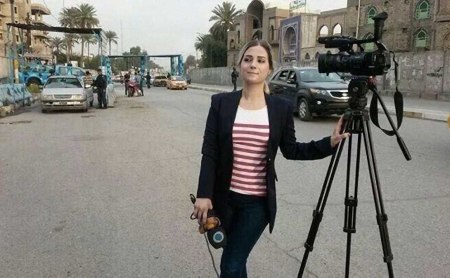
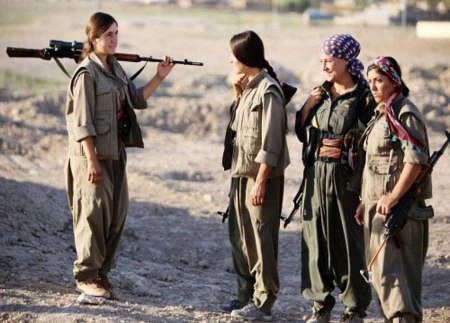
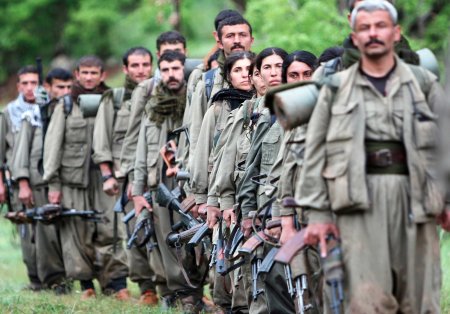
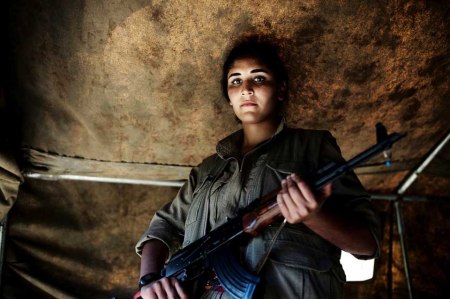
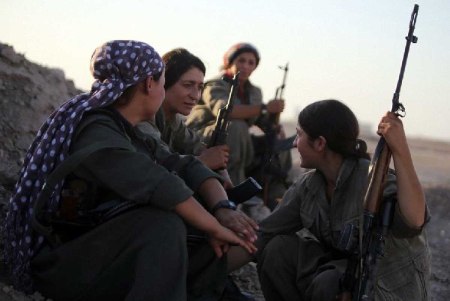
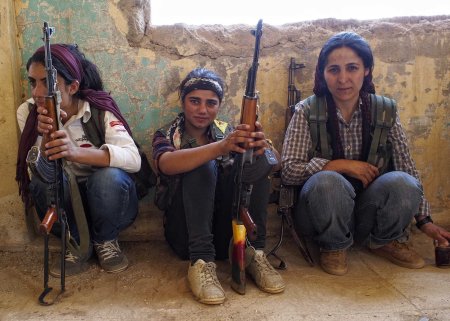
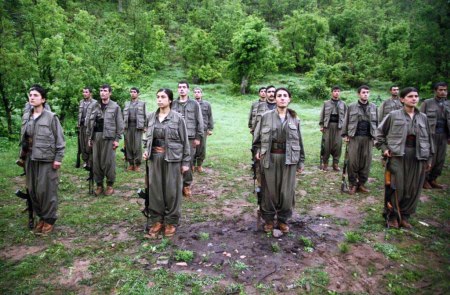
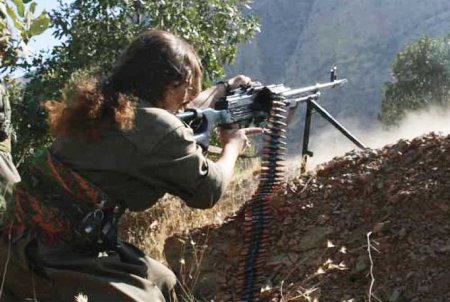

Keine Kommentare:
Kommentar veröffentlichen